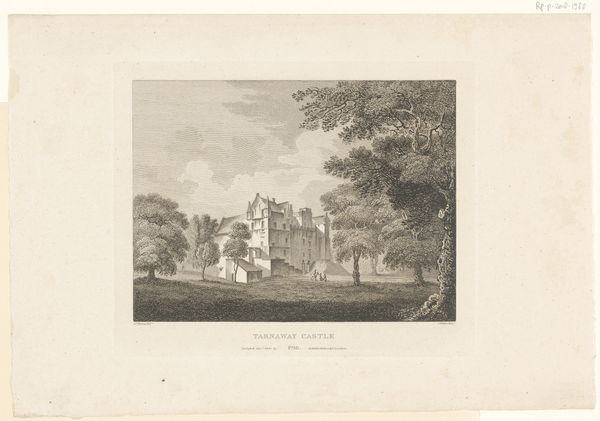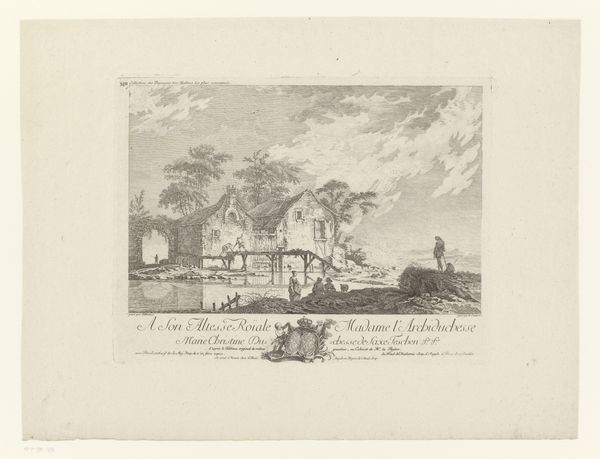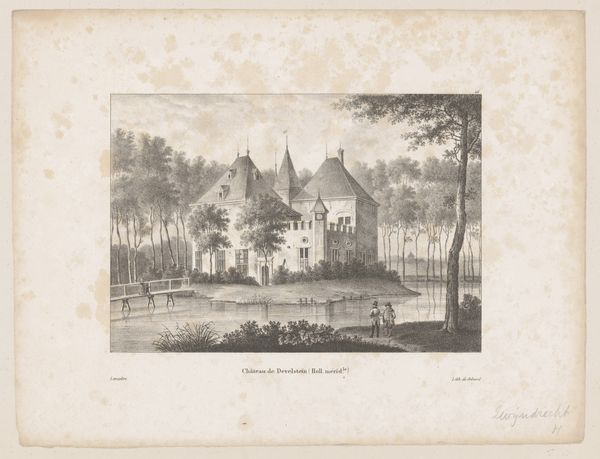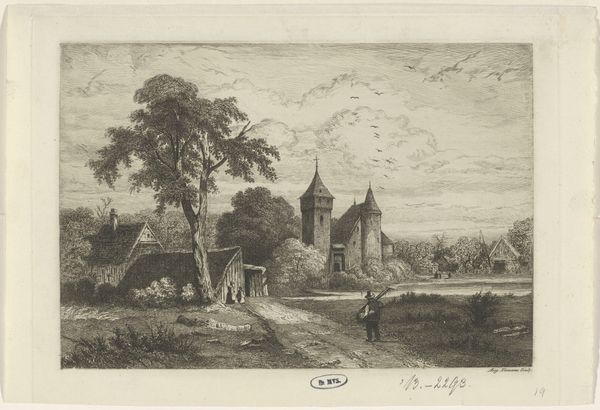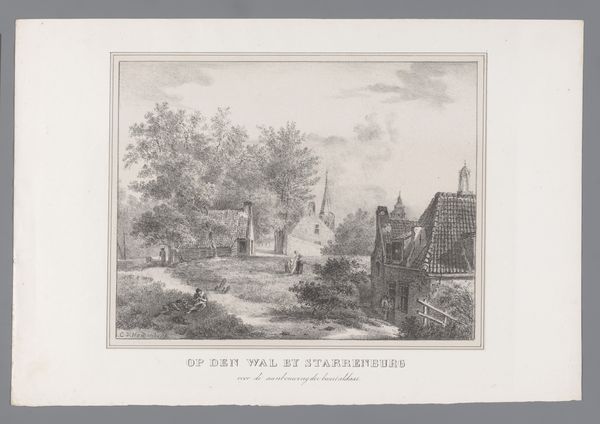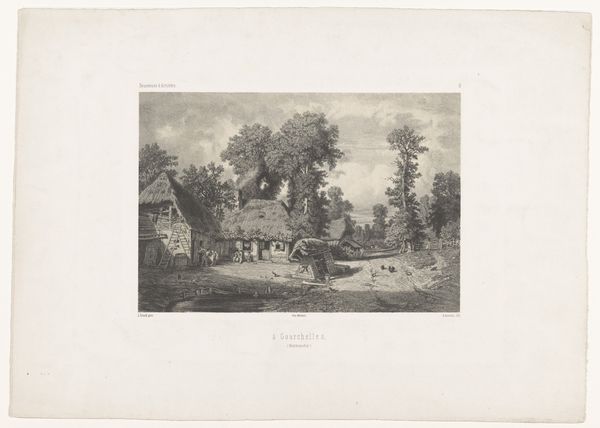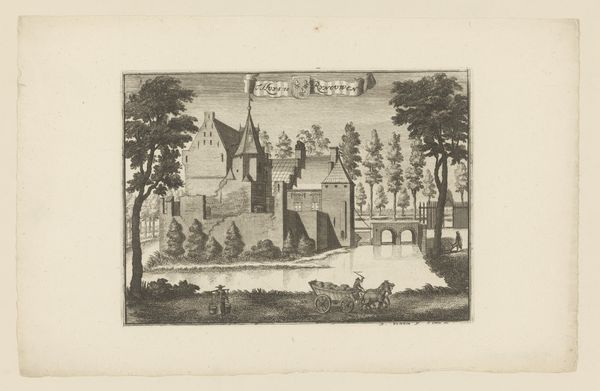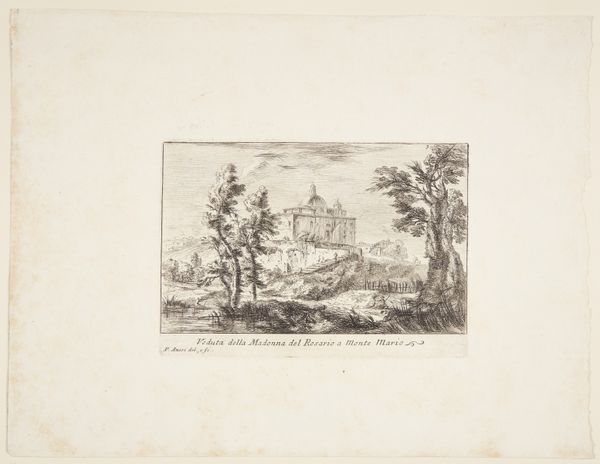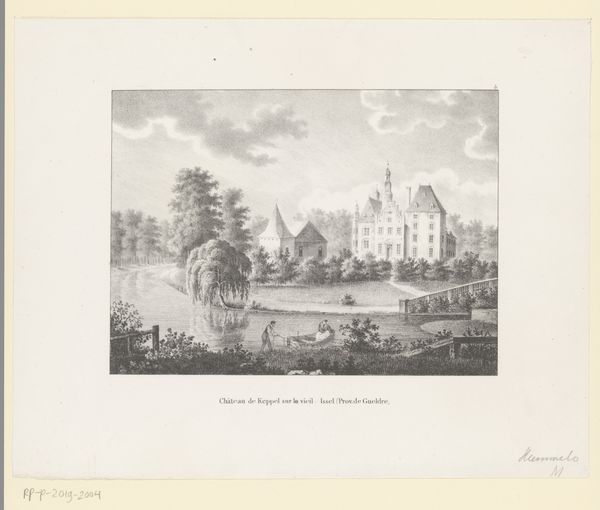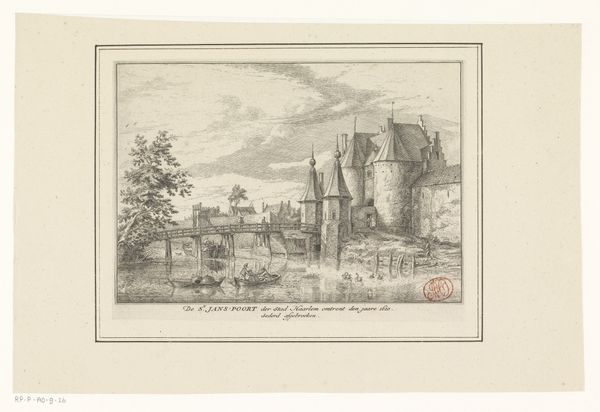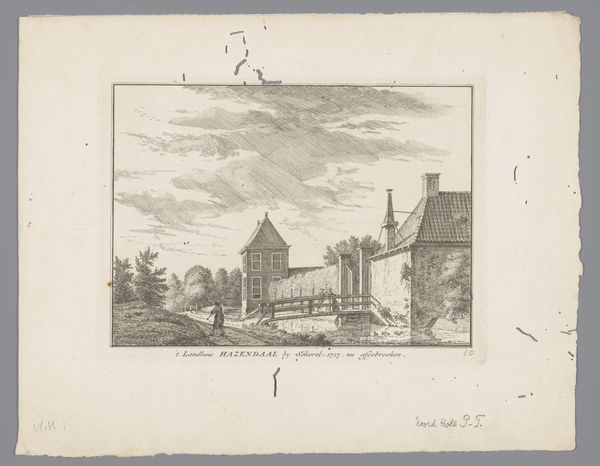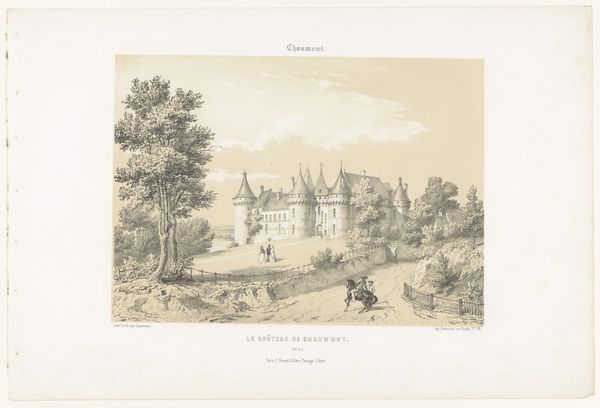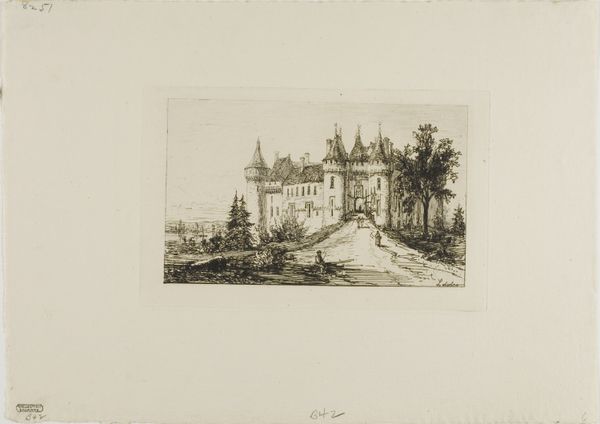
print, etching, engraving
# print
#
etching
#
pencil sketch
#
old engraving style
#
landscape
#
romanticism
#
cityscape
#
engraving
Dimensions: height 168 mm, width 241 mm
Copyright: Rijks Museum: Open Domain
Editor: This etching, "View of Bentheim Castle from the West" by Louis Thümling, dating from around 1831 to 1843, really evokes a sense of Romantic grandeur. The castle dominates the landscape, but there's a sense of quiet observation with the figures in the foreground. What sort of symbolic readings can we find in this landscape? Curator: I see a fascinating interplay between nature and civilization. The castle, perched atop the hill, represents power, history, and the enduring presence of humankind. Notice the contrasting textures - the meticulously etched stones of the castle versus the wild, almost chaotic lines describing the surrounding foliage. Does this contrast reveal anything about the artist’s intentions? Editor: It almost seems like nature is encroaching, softening the imposing structure. Are those figures in the foreground pilgrims, or simply passersby? Curator: Their small size emphasizes the vastness and timelessness of the landscape. Their presence could symbolize humanity's relationship to history, perhaps our transient existence against the backdrop of enduring structures. Think about how the castle itself, as a cultural symbol, would have resonated with viewers in the 19th century. What emotions would it evoke? Editor: Maybe a sense of national pride, or nostalgia for a romanticized past? Curator: Precisely. And consider the use of light and shadow. The dramatic lighting accentuates the castle, drawing our eye upwards. Light symbolizes knowledge, but shadows hide many things, allowing the castle’s image to grow, to transform in our minds. It can carry collective cultural memory but it’s also being made anew for each of us. Editor: So, it's not just a picture of a castle; it's about how we relate to history and the power of place? Curator: Indeed. The artist uses the castle as a symbol to unlock deeper feelings about heritage, time, and the human condition. The icon invites reflection on what we preserve from our past and how it shapes our present. Editor: That really changes how I see the piece. It’s a lot richer than just a pretty picture of a castle. Curator: Seeing those symbols and interpreting them enriches how we connect to artworks across time, place and cultures.
Comments
No comments
Be the first to comment and join the conversation on the ultimate creative platform.
